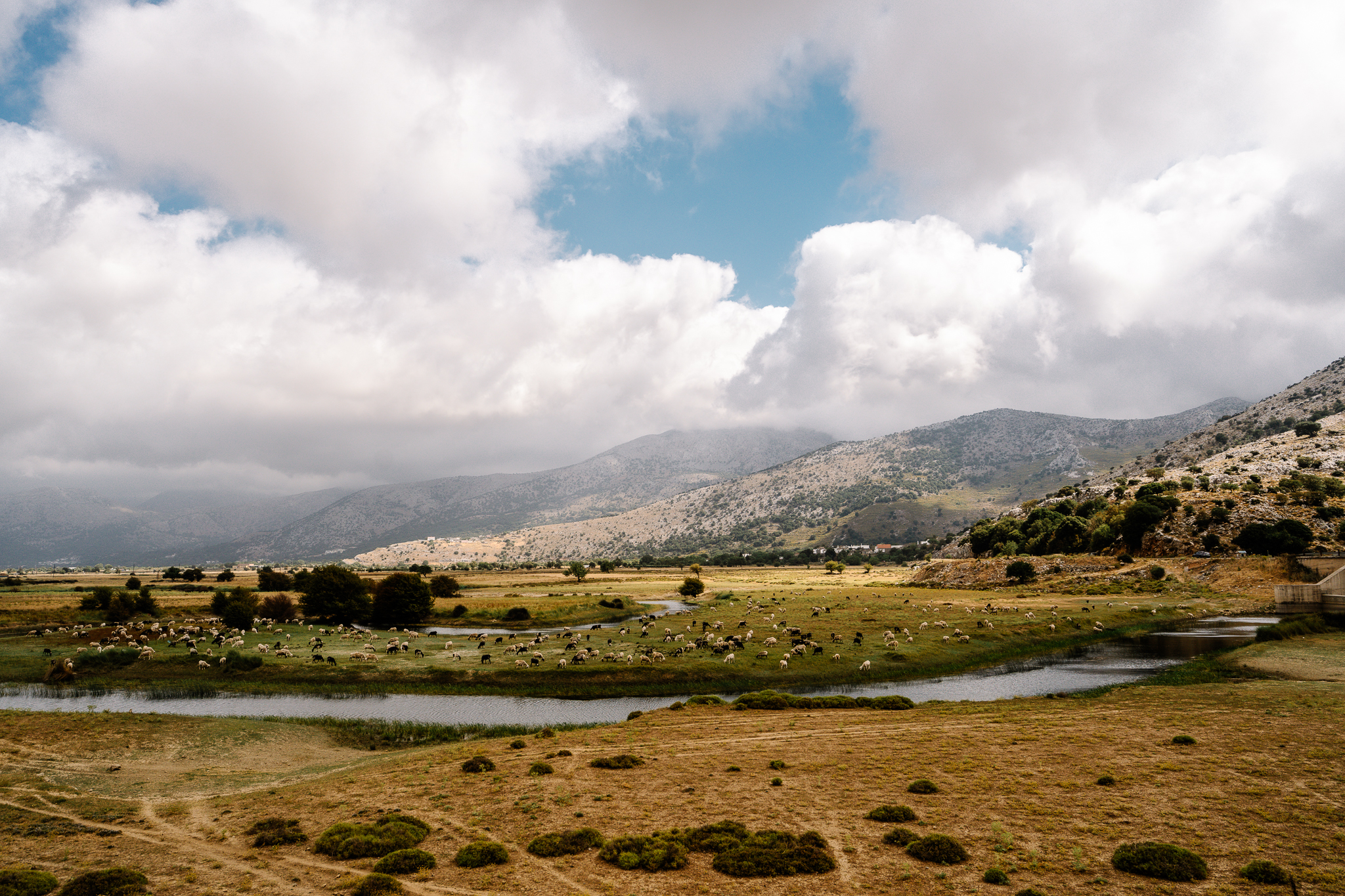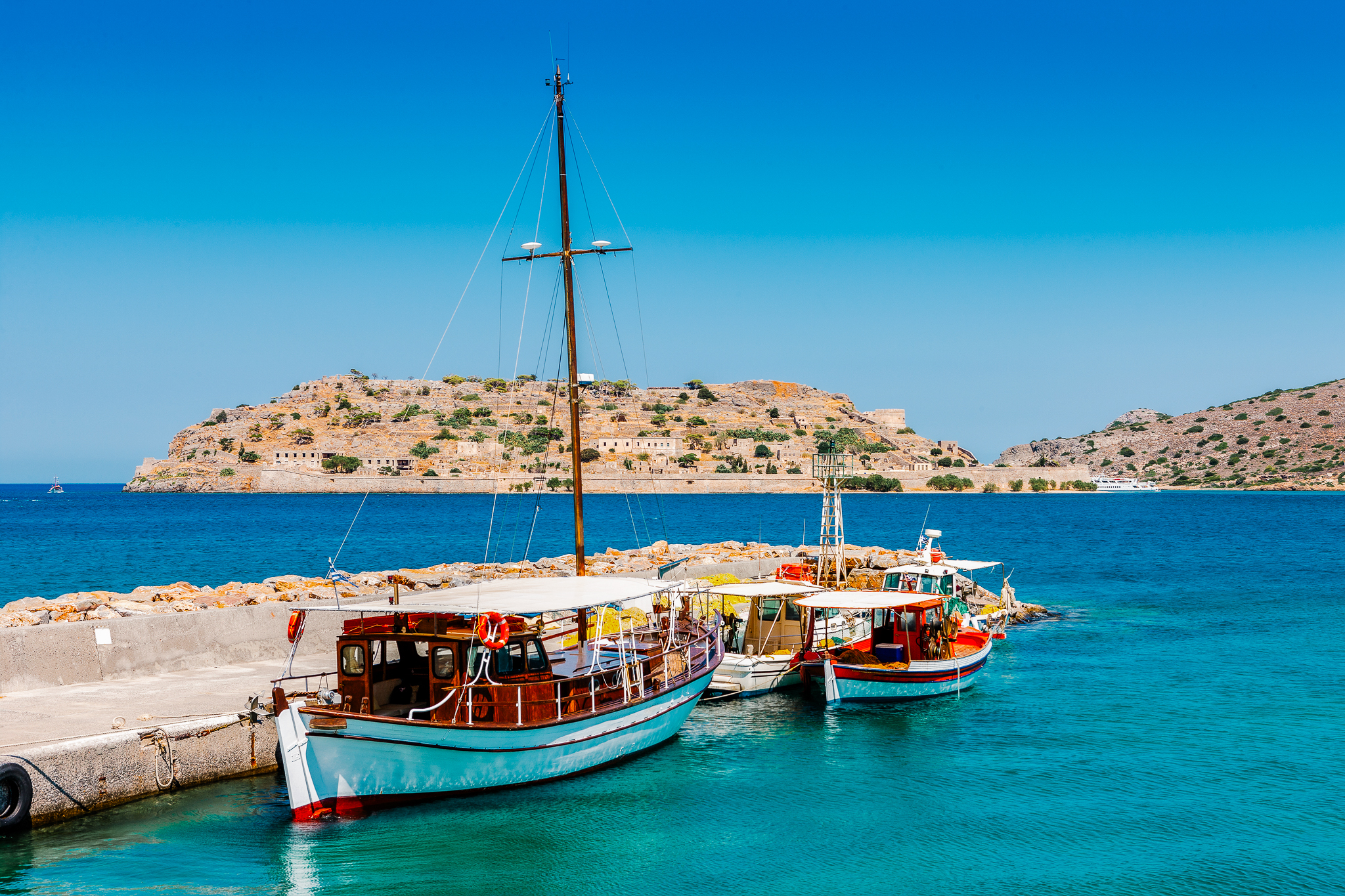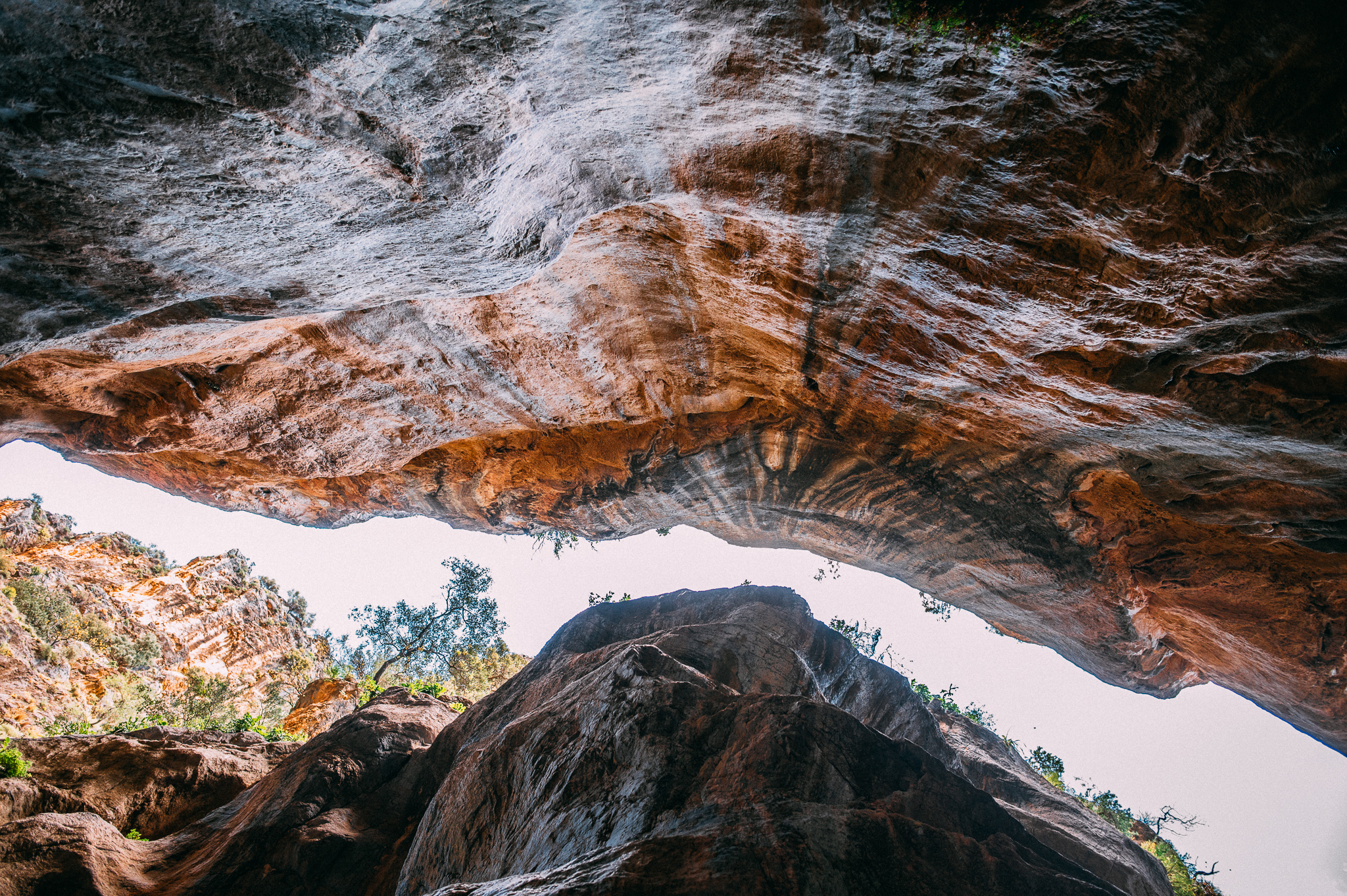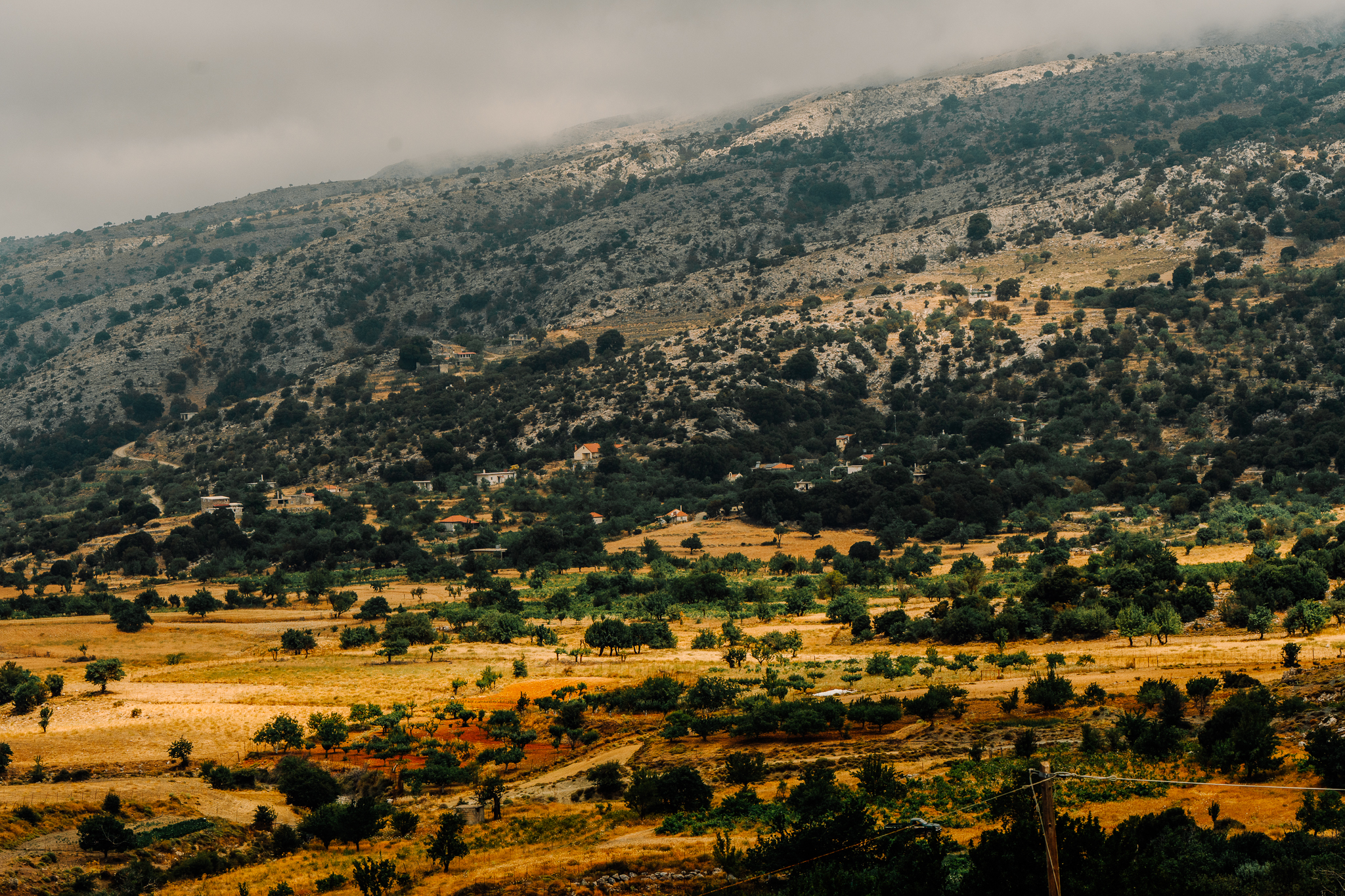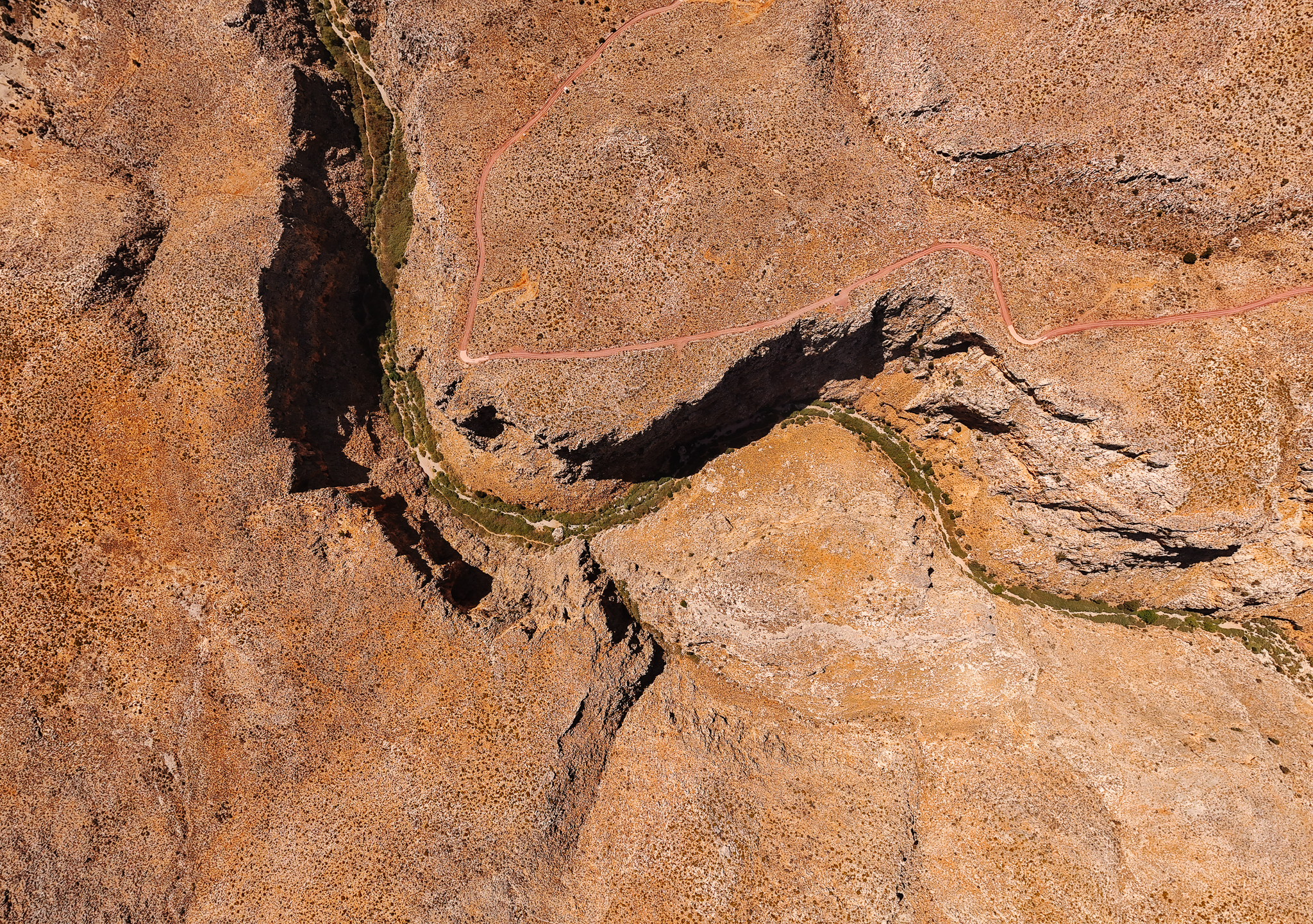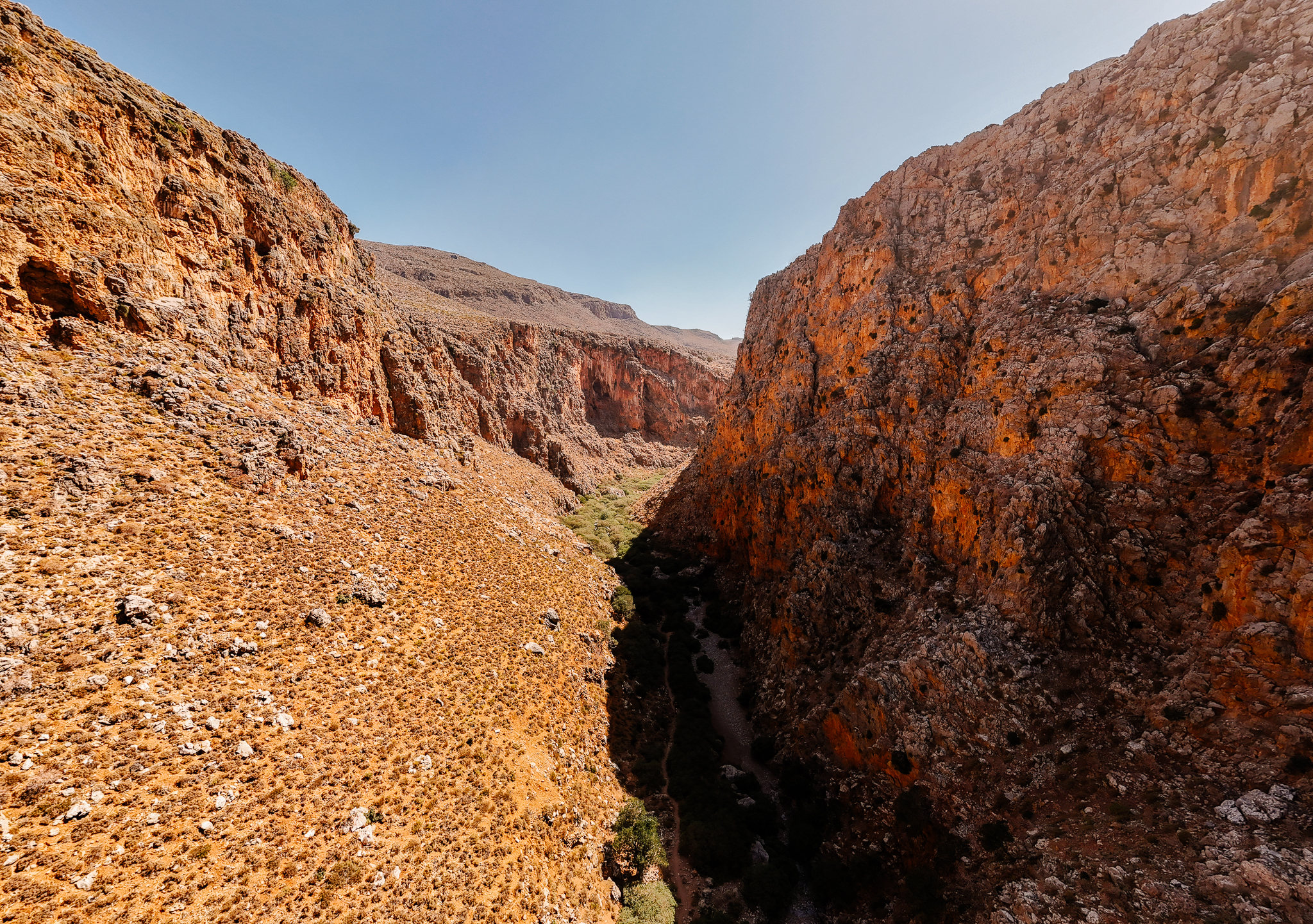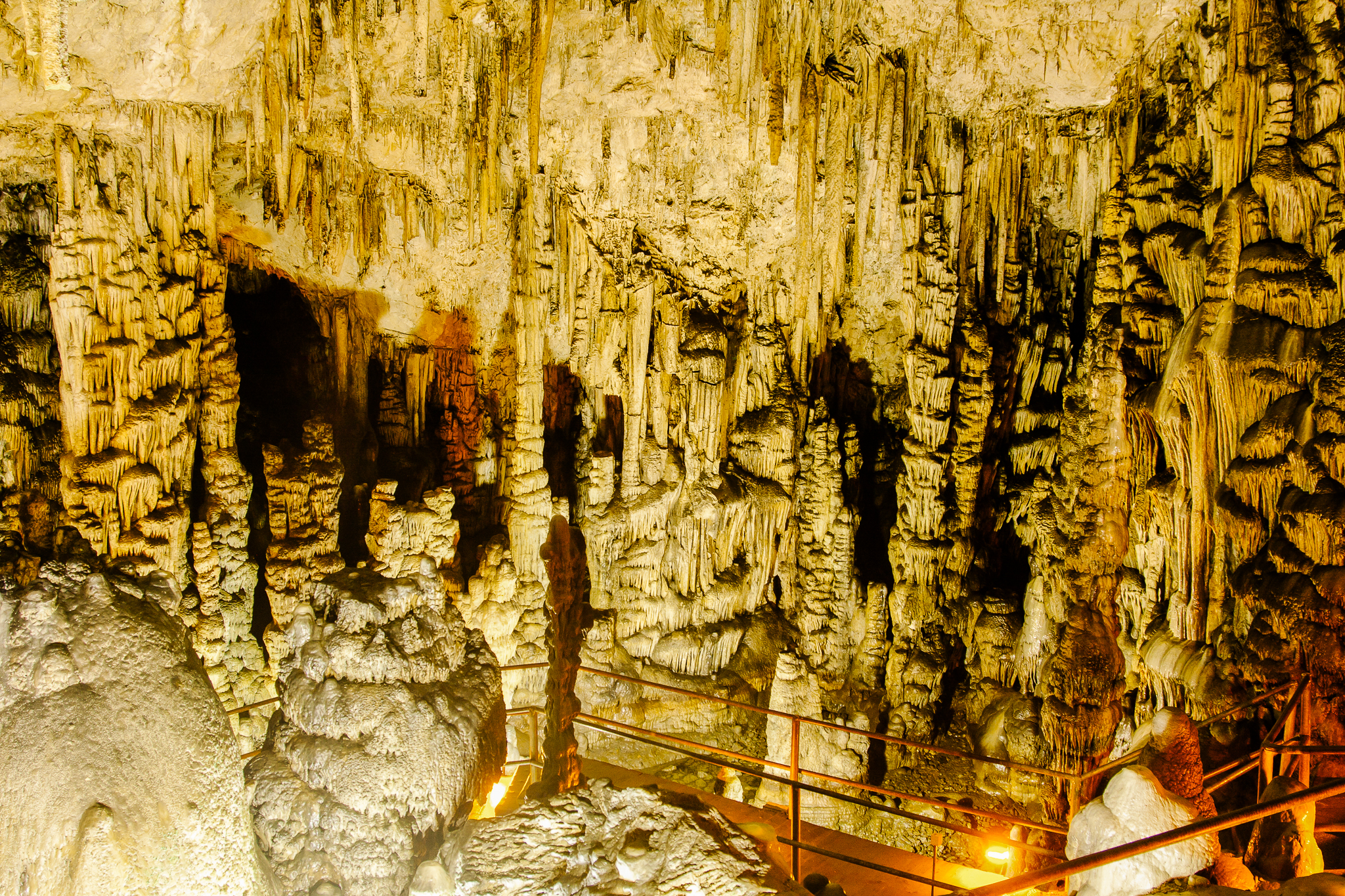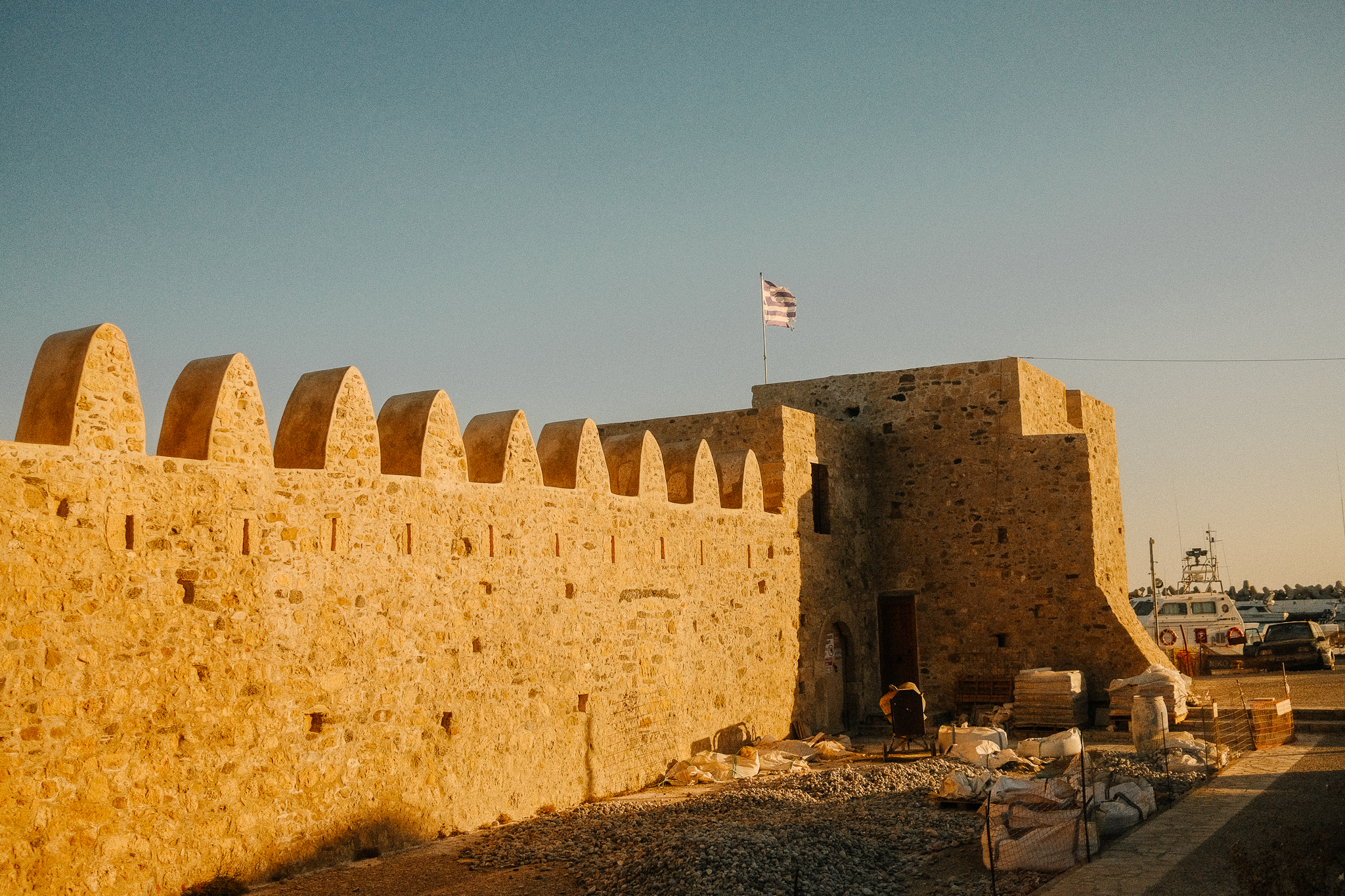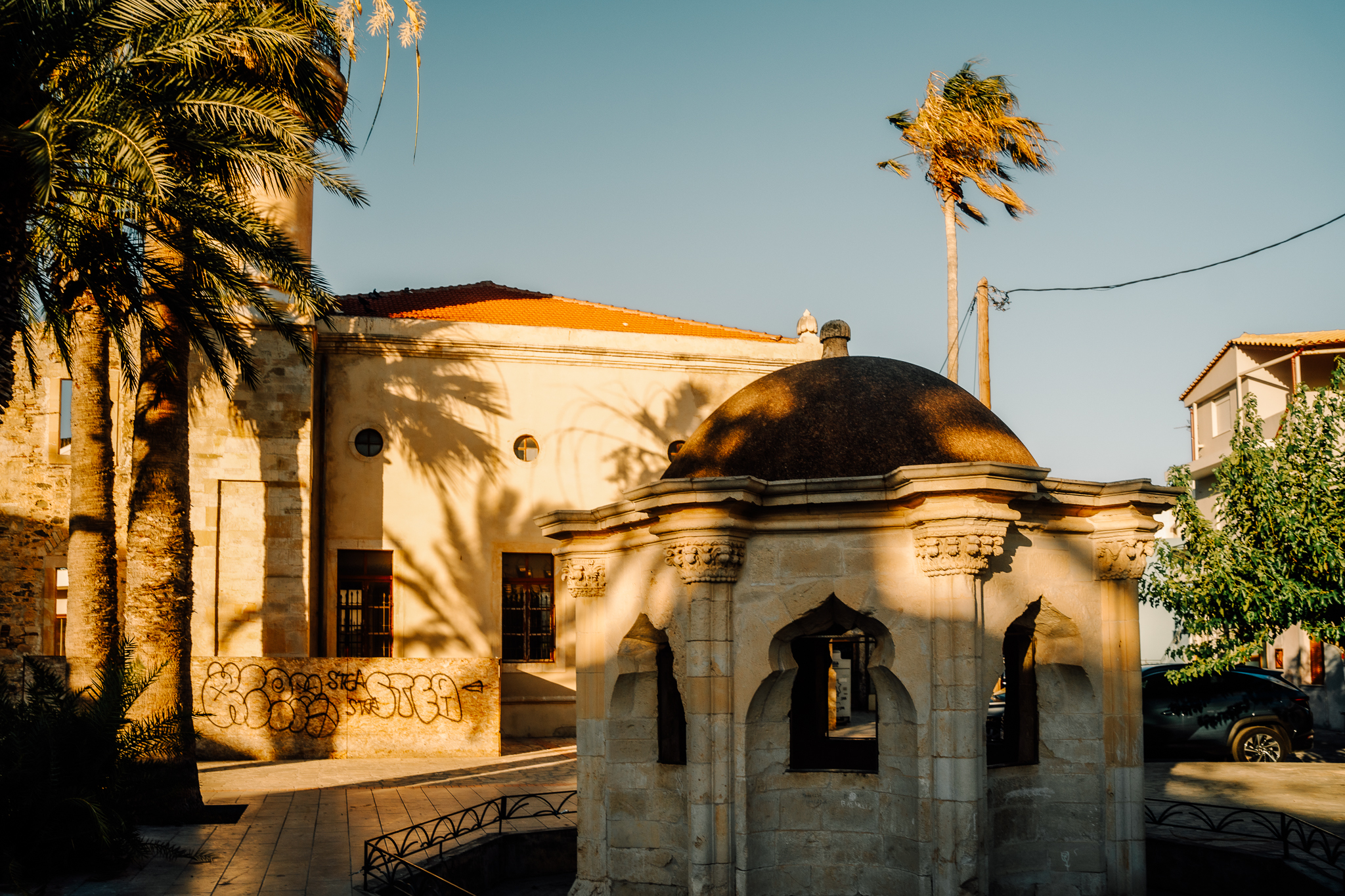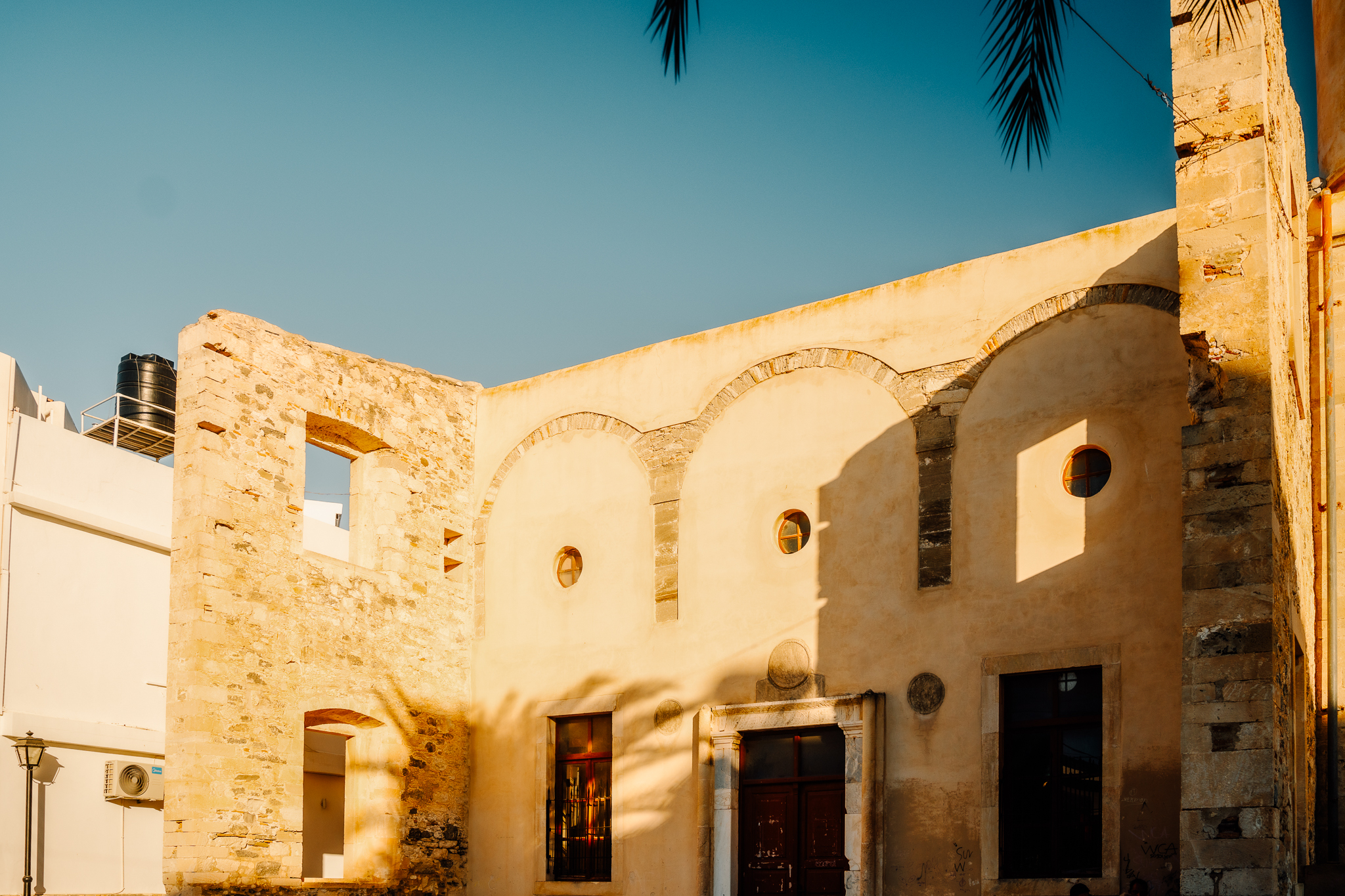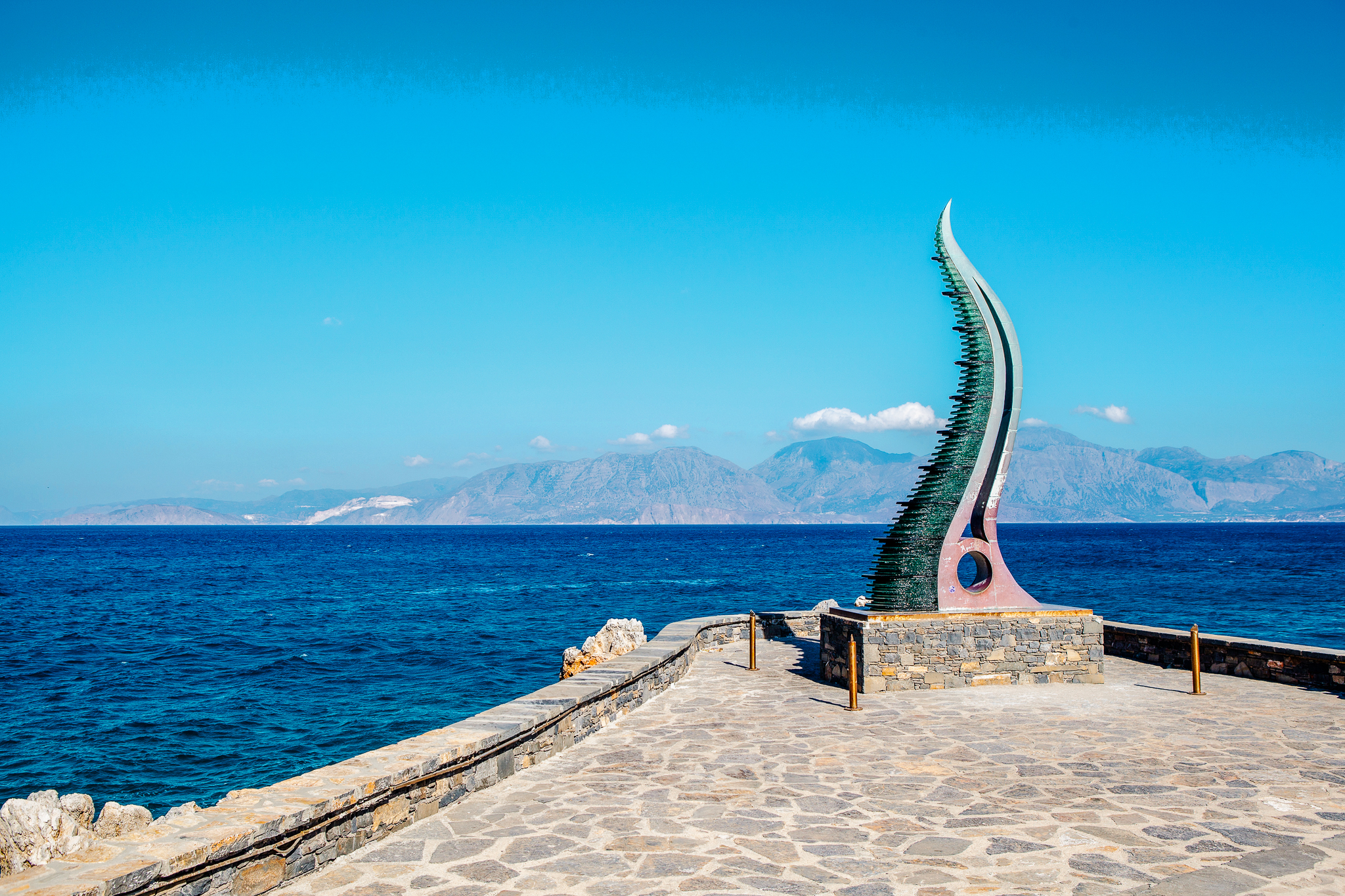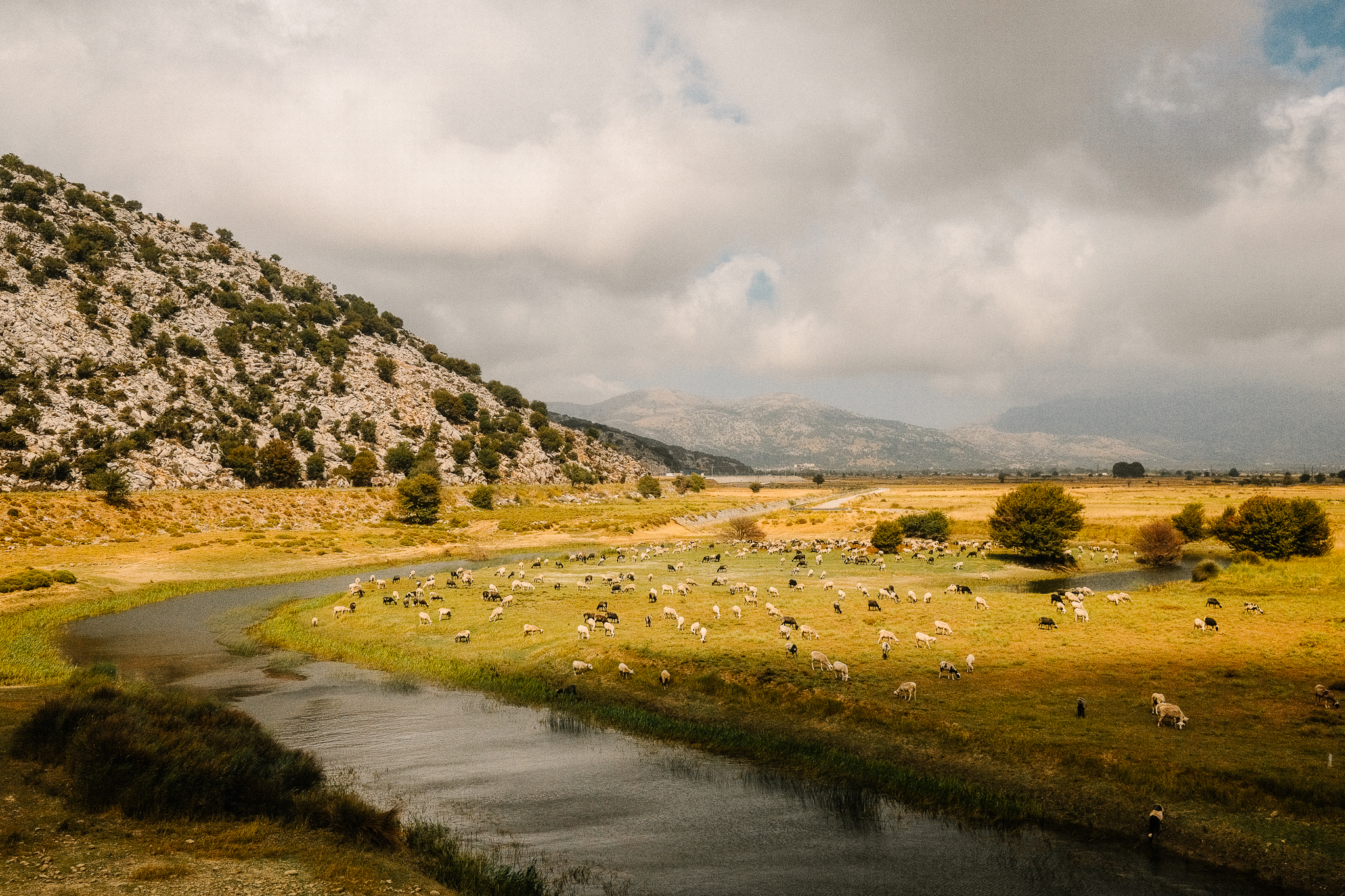Lasithi, Crete’s easternmost region, is a distinctive area that, despite its rugged landscape, hosts some of Crete’s most engaging activities. Combining untamed natural beauty with unique products and flavors, Lasithi offers visitors unforgettable experiences that few destinations can match.
Windsurfing at Kouremenos Beach
Kouremenos Beach, the largest in the Palaikastro and Sitia area stretching over 1.5 kilometers, is bounded by Kastri hill to the south and Cape Plaka to the east. With its fine brown sand, Kouremenos Beach is ideal for windsurfing – it hosted windsurfing competitions in 2009 and accommodates all skill levels, including beginners.
Horseback Riding
One of eastern Crete’s most popular activities caters to families, groups, couples, and solo visitors. With expert guides, visitors can customize routes based on their level, time, and abilities while exploring ancient paths, medieval monasteries, and plateaus rich with Cretan herbs. Through horseback riding in Lasithi, visitors can deeply experience the Fourni, Neapoli, Syrmesos, and Keramos basins.
Rock Climbing at Peza
The Peza climbing area consists of four rocks: Minoas, Talos, Istronas, and Pan. Located 12 kilometers east of Agios Nikolaos, it’s a significant sport climbing destination in Crete. The rocks’ orientation allows climbing throughout the day and year in safe conditions, while spectacular views of Mirabello Bay and Lasithi peaks make this area naturally exceptional.
Olive Oil Tastings
Olive oil tasting offers visitors the opportunity to explore Crete’s olive-growing culture and experience the distinctive characteristics of Cretan olive oil. The experience includes in-depth discussions about Cretan olive cultivation history and all factors affecting commercial olive oil quality. Tastings take place at selected locations throughout Lasithi, often culminating in sampling traditional Cretan dishes. During these sessions, visitors learn about the olive-growing culture of Crete while discovering the unique characteristics of Cretan olive oil through guided tastings that highlight the nuances of different varieties and production methods.
Easter Bread Making
When visiting Lasithi during Easter, one of the most authentic culinary experiences involves participating in traditional Easter bread making. Fresh pastries crafted with traditional ingredients and simple techniques epitomize authentic Cretan culinary heritage. Kalitsounia and tsourekia with chocolate or yogurt represent just a sampling of Easter specialties visitors can learn to make throughout the Lasithi region. The experience includes hands-on preparation using age-old techniques passed down through generations, offering insights into both the culinary and cultural aspects of Cretan Easter traditions.
Fishing Tourism
One of Lasithi’s most immersive experiences is participating in local fishing traditions. Despite weather-dependent challenges, fishing tourism connects visitors with traditional fishing occupations while offering deep insights into Lasithi’s local culture. Participants join local fishermen to learn traditional fishing methods, understand sustainable practices, and experience the daily life of Cretan fishing communities. The experience typically concludes with visitors enjoying their catch prepared according to local recipes, combining the fishing adventure with authentic Cretan gastronomy. This activity brings visitors into direct contact with traditional fishing professions while providing opportunities to deeply understand local culture through hands-on participation and culinary exploration.
Lasithi Gorges
Lush with hidden oases and waterfalls, Lasithi’s gorges are Crete’s most unexplored natural attractions. Featuring steep slopes, marked trails, and rare flora and fauna, these gorges demonstrate Crete’s dynamic geomorphology, offering visitors unique landmarks of immense ecological and cultural value rarely found elsewhere.
Richtis Gorge
Located in northern Lasithi, Richtis Gorge ranks among Crete’s most significant ravines. Starting from Exo Mouliana village, this 2.9km gorge, notable for its dense green vegetation, ends at Richtis beach on the Cretan Sea. A key feature is its year-round water supply from two persistent streams. The impressive waterfall mid-gorge complements the trail’s attractions, including old watermills and the legendary Lachanas bridge.
Sarakina Gorge
Just outside Mythoi village and near coastal Myrtos, Sarakina Gorge is considered one of Crete’s most beautiful, thanks to its year-round water flow. The Kryopotamos River runs through it, and its name reportedly comes from the Saracens who swept through the Mediterranean in the 12th century. Along the 1.5km route, visitors discover spectacular walls, small pools, and natural bridge descents formed over centuries. Steps have been carved at difficult points to facilitate hiking.
Ha Gorge
Known as one of Europe’s most challenging, steep, and wild gorges, Ha Gorge with its nearly vertical entrance is among Lasithi’s most famous. Ranked among Europe’s 10 most beautiful gorges, it’s renowned for its steep, almost vertical slopes and demanding trails suitable almost exclusively for experienced mountaineers. The gorge houses rare flora and fauna and features a massive 215-meter waterfall.
Kritsa Gorge
Kritsa or Havgas Gorge begins from its namesake village about 10 kilometers southwest of Agios Nikolaos and ends at Tapes village. Easily accessible with an impressive entrance created by the mountain split, Kritsa Gorge is known for its narrow passages, sometimes just one and a half meters wide. Visits are recommended only during dry periods, as dangerous flooding can occur after heavy rainfall.
Havgas Gorge
Perhaps Lasithi’s largest gorge, Havgas forms between Katharios Lakkos and Katharia Kefala heights of Dikti. Named after the Havgas or Xenikos River that crosses it, the 4km gorge features the beautiful Neraidokolympos lake at the base of a small waterfall. Due to main trail difficulties, it’s among Lasithi’s least visited gorges, maintaining its delicate ecosystem largely intact.
Mountains and Refuges of Lasithi
Remote, unknown, and unexplored, Lasithi is undoubtedly one of Crete’s most intriguing regions. Gorges, plateaus, mountains, and untamed nature compose the setting in one of Greece’s most unique corners, offering unforgettable memories and experiences to every visitor. From wild peaks to precipitous gorges, Lasithi brims with natural beauty rarely found elsewhere.
Dikti Mountain Range
The Dikti mountain range, also known as Lasithi Mountains, stretches along the borders of Heraklion and Lasithi prefectures. As Greece’s easternmost mountain range reaching significant height, its highest peak, Spathi, touches 2,148 meters. The range features diverse geological formations and numerous important gorges, including Havgas, Sarakina, Adrianos, and Kritsa, each with unique characteristics and ecosystems. At the range’s center, at 850 meters altitude, lies the Lasithi Plateau, where visitors can explore the legendary Diktaean Cave. The mountain range hosts various endemic plant species and serves as an important habitat for local wildlife, particularly raptors and small mammals.
Katharo Plateau
Katharo Plateau, situated 26 kilometers south of Agios Nikolaos and 16 kilometers west of Kritsa, rests in the Lasithi Mountains at 1,150 meters altitude, beneath Lazaros peak. Though sparsely populated with few farmhouses, the plateau maintains significant agricultural importance through traditional cultivation methods. Local farmers from Kritsa maintain potato fields, apple orchards, and vineyards, preserving traditional agricultural practices. The plateau’s waters flow through Havgas Gorge to Lasithi Plateau, creating a unique hydrological system. Along the road to Selakano stands the picturesque chapel of Afentis Christos, an important religious and cultural landmark for local communities.
Selena
Mount Selena rises on the northeastern side of Lasithi Plateau and, though not Crete’s highest mountain, offers unrivaled views that can extend to Santorini when weather permits. The mountain reaches 1,559 meters, and at its peak stand ruins of a World War II machine gun nest and observation post. According to local accounts, these were built at German demand for transporting troops and ammunition to Crete’s mountainous regions.
Strovili Refuge
The Lasithi Mountaineering Club refuge sits at Strovili, at 1,358 meters altitude, above Limnakaro Plateau in the Dikti range. After a two-hour hike following the European path E4, visitors reach the refuge, from where they can continue to the peaks of Spathi, Psari Madara, and Afentis Christos, or toward Selakano.
Mount Orno
With its highest peak Spathi reaching 1,238 meters, Mount Orno dominates Sitia province and encompasses the Kapsa area, while separating from the Thripti mountain mass to the south. Though not particularly high compared to other Cretan mountains, Mount Orno distinguishes itself through its steep cliffs and gorges that serve as crucial wildlife refuges in the broader Lasithi region. The mountain’s most notable gorges – Tsigounis, Richtis, and Koudoumis – each represent unique ecosystems supporting diverse flora and fauna. The steep terrain and relative inaccessibility have helped preserve these natural habitats, making them important sanctuaries for local wildlife species.
National Parks
Sitia Geopark
Sitia Geopark, spanning 517 square kilometers from Cape Cavo Sidero to Zakros’ shores in the east, joined UNESCO’s Global Geoparks list in 2015. Located at Crete’s easternmost tip, it includes an extensive collection of Pleistocene mammal fossils and stands out for its vast network of over 170 caves and gorges. The immense number of marine and terrestrial mammal fossils attracts those interested in Crete’s geological history. The geopark maintains a dedicated Information Center.
Lasithi Trails
Gorge of the Dead (Zakros)
At Crete’s eastern edge, near picturesque Zakros village, lies one of the island’s most impressive and historical gorges: Zakros Gorge, known as the Gorge of the Dead. This unique hiking route offers an enthralling experience combining natural beauty with ancient history. The name originates from ancient Minoan burial practices – the deceased were placed in caves along the gorge’s steep walls, lending the place its mysterious atmosphere and direct connection to Crete’s distant past.
The trail, part of the European E4 path from Portugal across Europe to Crete, offers relatively easy hiking accessible to less experienced walkers. The route presents spectacular natural scenes: massive rocks with ancient caves, plane trees, and aromatic shrubs including lentisk, oleander, and lavender. The gorge’s flora typifies the Cretan countryside, with low vegetation predominating.
At the trail’s end, hikers discover Zakros Minoan Palace, Crete’s fourth-largest Minoan palace. This archaeological site offers unique insights into Minoan civilization and the area’s ancient commercial importance. The experience culminates at Kato Zakros beach, where visitors can enjoy a refreshing swim in the Libyan Sea’s crystal waters and sample local delicacies at seaside tavernas. The Zakros Gorge offers a unique experience combining natural beauty, ancient history, and traditional Cretan hospitality – a journey through time, nature, and culture all in one route.
The Path to Dikti
Near Psychro village, one of Crete’s most emblematic and mythical locations awaits: the Diktaean Cave. This short but enchanting circular route offers visitors a unique opportunity to walk in ancient myths’ footsteps and explore Zeus’s legendary birthplace. The hike begins at the Diktaean Cave parking area, at 861 meters altitude. Hikers have two options:
The northern path: Shorter but rougher, offering a more direct route for experienced hikers.The southern path: Smoother and paved, ideal for those preferring an easier ascent, though slightly longer. As hikers ascend toward the cave, they enjoy magnificent views of Lasithi Plateau, one of Crete’s most fertile and picturesque landscapes. Though brief (about 25 minutes total), the route offers an impressive variety of landscapes, from rocky slopes to dense Mediterranean vegetation.
The highlight is the Diktaean Cave itself at 948 meters altitude. This impressive cave, with its majestic stalactites and stalagmites, represents both geological wonder and deep mythological significance. According to myth, here Rhea hid newborn Zeus from his father Kronos, and here the future king of gods was raised by Nymphs. The cave visit combines natural beauty with historical and mythological importance.
After cave exploration, the return to the starting point completes the circuit, offering a final opportunity to enjoy the plateau’s magical views. This short but experience-rich route suits families, casual hikers, and those seeking a quick immersion in Cretan mythology and history. Remember to check cave opening hours before visiting and follow signage and staff instructions for a safe, enjoyable experience at the mythical Diktaean Cave.
Chochlakies (Karoumes Gorge)
At Crete’s eastern tip, a few kilometers south of Palaikastro, lies a natural treasure awaiting discovery by hiking and nature enthusiasts: Chochlakies or Karoumes Gorge. This captivating route offers a unique experience combining geological interest, rich biodiversity, and a breathtaking reward at trail’s end. The hike begins near Saint George’s chapel in Chochlakies, where hikers leave their vehicles. From here, the path winds through impressive geological formations, following a seasonal stream bed.
The two-hour route offers an exciting experience as hikers pass between steep rocks and impressive caves. Spring is perhaps the best time to explore the gorge when the landscape comes alive with an amazing variety of flora. Rare and endemic plants bloom, offering a colorful spectacle. However, hikers should be prepared for light climbing, as spring rains create small pools along the route.
The gorge is also a paradise for bird enthusiasts. The steep rocks host many bird species, particularly raptors, offering excellent bird watching opportunities. The reward at the trail’s end is Karoumes beach, an idyllic, secluded shore where hikers can relax in the shade of trees and enjoy absolute tranquility. The area around the beach also interests geology enthusiasts, with many fossils visible in the eroded coastal rocks.
For more ambitious hikers, there’s an extended route option starting from Agathia near Palaikastro. This route, lasting about 4 hours, passes through Platyvola and the beaches of Skoinias and Karoumes before reaching Chochlakies. The Chochlakies or Karoumes Gorge offers something for everyone: from nature lovers and botanists to geologists and birdwatchers. It combines the challenge of an interesting hike with the reward of an idyllic beach, all within a landscape of exceptional natural beauty. It’s truly an eastern Crete hidden gem awaiting discovery by adventurous travelers.
Milatos Cave
Just kilometers from picturesque Milatos village on Crete’s northern coast lies a destination combining natural beauty, historical significance, and easy access: the famous Milatos Cave, also known as Rapas Cave. This short route, more a walk than a hike, suits all visitors regardless of fitness level. A well-maintained 500-meter path leads from the parking area to the cave entrance, offering a pleasant walk with views of the Cretan landscape.
The cave, at 155 meters altitude, is deeply connected to Cretan history. Here, a tragic page of the Greek Revolution unfolded in February 1823, when hundreds of Cretans sought refuge from Ottoman forces, only to find themselves besieged for days before meeting a tragic fate. At the cave entrance, visitors encounter Saint Thomas’s chapel and an ossuary, built in 1935 as a monument to that tragedy’s victims. These elements add a historical pilgrimage dimension to the visit.
Beyond its historical significance, Milatos Cave holds important speleological and biological interest. At 75 meters total length, the cave comprises many small chambers across different levels, decorated with impressive stalactites and stalagmites. Access to the interior is relatively easy, though visitors may need to bend in some places.
The cave also has archaeological value, with findings indicating its use as a burial site during Neolithic and Minoan periods. Additionally, it serves as an important refuge for many bat species, particularly during winter months. This short walk to Milatos Cave offers visitors a unique opportunity to experience a piece of Cretan history, admire a spectacular cave’s natural beauty, and enjoy an easy walk in the Cretan countryside. It’s a destination ideally combining history, geology, and Cretan nature, accessible to visitors of all ages and abilities.
Points of Interest in Lasithi
Embraced by three different seas – Cretan, Libyan, and Carpathian – simultaneously picturesque and cosmopolitan, with famous landmarks and well-kept secrets, Lasithi, Crete’s easternmost and most low-key prefecture, is both mythical and absolutely authentic. Indeed, myths and history coexist harmoniously in this land where Zeus was born and raised, from the Diktaean Cave to artistically significant works and notable attractions like the following.
Kales Fortress of Ierapetra
Guardian and landmark of Ierapetra’s harbor, Kales combines medieval architecture, Venetian roots, and an Ottoman name to stand as one of Crete’s most impressive fortresses. Overlooking the Libyan Sea, this square fortress most likely represents 13th-century Venetian construction, though some attribute it to Genoese military commander Enrico Pescatore in 1212. A significant earthquake devastated the fortress in 1508, and extensive damage wasn’t fully repaired until 1626, under Venetian Doge Francesco Morosini’s direction. Following Ierapetra’s fall to Ottoman forces in 1647, the fortress underwent further fortification, becoming part of the Ottoman defensive network against Cretan revolutionaries. It retains its name “Kales of Ierapetra” today, embodying the narrative of a historically rich region.
Kazarma Fortress
Signs of Venetian dominion appear in Vitsentzos Kornaros’s birthplace, where Kazarma fortress commands Sitia’s bay from its elevated position. Its original name, Casa di arma (House of Arms), reveals its function as Venetian garrison barracks, constructed in the 13th century. The fortress marked the northern terminus of defensive walls enclosing a triangular section called Castello. Having already sustained significant damage, it was further impacted by earthquakes in 1303 and 1508, as well as Barbarossa’s 1538 invasion. Ottoman rule brought structural modifications, with a new fortress essentially built upon the original Venetian castle’s foundation. Today, visitors can explore the elevated, preserved monument’s courtyard and recently restored spaces, which testify to its rich past while offering panoramic views of the vibrant coastal town and its beautiful harbor.
Ierapetra Mosque
Standing since Ottoman times, Ierapetra’s mosque with its imposing minaret dominates the Old Town’s heart, where visitors lose themselves in narrow alleys opposite the harbor and Kales fortress. Known as Hamidiye Mosque, it was built in the late 19th century according to dates inscribed above its entrance. Square in plan with a tiled roof, it features a marble Koranic inscription at its entrance. The mosque’s minaret still overlooks the city, though its upper section was damaged in the 1953 earthquake.
De Mezzo Villa
In the abandoned medieval village of Etia near the Armeni community stands one of southern Europe’s most magnificent examples of Venetian architecture and private noble residences. Built in the late 15th century by Venetian lord Pietro Dei Mezzo, the local feudal lord, this impressive structure showcases the epitome of Venetian architectural grandeur. Fortress-like, rectangular, and rising three stories, the villa features a large courtyard, rich decorative elements, and the family coat of arms above the lintel. The entrance welcomes visitors with a relief inscription in capital Latin letters, inviting them to enter without hesitation: “Intra vostra signiora senza rispetto” (Enter, your lordship, without restraint).
When the Ottomans captured Sitia, the villa became the konaki (residence) of the senior Turkish official overseeing the surrounding area, with new buildings added around it and a fountain in its courtyard. The last descendant of the first Turkish official, known as Seragianos and notorious for his atrocities against Christians, gave the villa its current local name – Seragio or Serai. Partially demolished after the revolution and its building materials repurposed, the Archaeological Service purchased it in 1959. Now declared a historical preserved monument, it has undergone extensive reconstruction and restoration.
Kritsa Fountains
In Kritsa, built amphitheatrically at 350 meters altitude on Mount Kastellos’s foothills, the traditional architecture, stone arches, abundant springs, and fountains created the perfect backdrop for Jules Dassin’s 1957 film “He Who Must Die.” The village features three historically significant communal fountains, each designated as a historical monument:
1. The Koutsounari area fountain: Stone-built with a simple arched form.
2. The Kavvousa area fountain: Features a distinctive twin-arched construction.
3. The Haniotena area fountain: A typical small Cretan fountain with a characteristic simple arch shape, still used for watering local livestock.
The last remaining kalderimi (stone-paved path) in Kritsa connects the village center with its eastern plain, abundant with olive trees, carob trees, almond trees, citrus, and fruit trees.
Sotiridis Brothers Statues, Horn of Amalthea, and Abduction of Europa
Mythology and art intertwine uniquely through the artistic vision of brothers Nikos and Pantelis Sotiridis, self-taught sculptors based in Agios Nikolaos, who transform metal into distinctive interpretations of famous symbols. Their monumental work “The Abduction of Europa,” depicting Zeus’s transformation into a bull to abduct Minos’s mother, draws attention near Agios Nikolaos harbor, having previously toured international exhibitions and adorned the European Parliament building in Strasbourg. Another spectacular piece, combining metal and glass, enhances Kitroplateia beach’s natural beauty – the impressive “Horn of Amalthea” sculpture, particularly striking at night when it creates enchanting light plays against Mirabello Bay.
Landscapes of Interest in Lasithi
At Crete’s eastern edge, Lasithi Prefecture offers one of Greece’s most distinctive and idyllic regions. From Agios Nikolaos city to Vai’s exotic palm forest and the magical Lasithi Plateau with its commanding mountain views, Lasithi uniquely combines rugged landscape with azure seas, history with raw, natural beauty.
Mastoras Zakros Waterfall
One of Greece’s three highest waterfalls lies in Lasithi near Monastiraki village, Ierapetra. The 215-meter Mastoras waterfall collects powerful waters from springs near Thripti village, creating an impressive cascade into the wild Ha Gorge. Much water transforms into mist, creating spectacular views both from within the gorge and its exit.
Lasithi Plateau
According to Greek mythology, this is Zeus’s birthplace. The beautiful Lasithi Plateau lies 25 kilometers south of Malia and 70 kilometers from Heraklion, amid high mountains and numerous plateaus. Eighteen of Crete’s most picturesque villages spread along Dikti mountain range’s foothills. The area offers ideal cycling opportunities, with bicycles being one of the best ways to explore the plateau’s beauty.
Ziros Plateau
Near Ziros village lies the small Ziros plateau, one of Lasithi’s most photogenic spots. The road passing through abandoned villages Chamaitoulo and Lamnoni leads to beautiful Xerokampos shores through a fantastic route where Crete’s “harsh” mountains contrast with paradisiacal blue coasts like Mazida beach.
Vai Palm Forest
Crete’s most famous beach owes its popularity to the characteristic large forest of Cretan palms extending directly above the shore. This represents Europe’s largest natural palm colony, with approximately 5,000 Phoenix theophrasti trees. Legend suggests the palms grew from date pits discarded by African pirates. Whether true or not, the palm forest spans 250 acres above an area where brackish water springs emerge. Notably, smaller colonies of this palm species appear elsewhere in Crete, demonstrating the species’ historical presence on the island.
The organized beach features umbrellas, showers, and a canteen, while the nearby beautiful Psili Ammos beach offers a more secluded alternative. The forest’s unique ecosystem provides habitat for various bird species and small animals, making it an important site for biodiversity conservation as well as tourism.
Bramiana Lake
Created in 1986 to irrigate 30,000 acres of Ierapetra’s farmland, Bramiana artificial lake lies 5 km northwest of the city on the Ierapetra-Kalamafka road. The lake has evolved into a crucial wetland and migratory bird station, now hosting Crete’s largest water bird populations. According to the Natural History Museum of Crete’s 2011 data, over 218 different bird species have been recorded here – remarkable for a relatively new lake. These factors led to Bramiana’s protected area designation. The lake features carefully designed infrastructure including observation points, benches, floating bird nests, and informative signage. Visitors can walk or cycle around the lake, enjoying magical views of blue waters against Lasithi Mountains. The site has become particularly important for bird watching, environmental education, and scientific research.
Lake Agios Nikolaos (Voulismeni)
Widely known as “Voulismeni Lake,” this iconic feature with its 500-meter perimeter represents Agios Nikolaos city’s absolute landmark. The lake connects to the sea through a shallow, narrow channel constructed in 1870, creating a unique ecosystem where freshwater meets saltwater. Local legend claims the lake is bottomless, while Greek mythology suggests goddesses Artemis and Athena once swam in its waters.
In reality, the lake reaches maximum depths of 48 meters and has become a popular venue for cliff diving competitions thanks to its surrounding rocky heights. One of the area’s most popular experiences involves strolling around this idyllic lake, particularly during sunset when cafes and restaurants along its shores come alive with activity. The lake’s geological formation and historical significance make it a focal point for both tourism and local culture.
Xerokampos
In one of Lasithi’s quietest and most remote areas, the landscape maintains its wild, raw, and arid character. Xerokampos features bare mountains and low vegetation, primarily consisting of shrubs, thyme bushes, and olive trees. The settlement provides all necessary amenities for exploring the surrounding area, including small tourist accommodations, while preserving its authentic character away from mass tourism.
The striking contrast between wild, pristine landscape and beautiful, crystal-clear sea creates Xerokampos’s distinctive appeal. Natural spa enthusiasts particularly appreciate the fine clay found at specific coastal points. The area offers several remarkable beaches, each with its own character:
Ampelou Beach: A pristine shore offering natural beauty and tranquility
Main Xerokampos Beach: The primary beach with basic facilities
Alona Beach: Known for its crystal-clear waters
Alatsolimni Beach: Features unique geological formations
Amatos Beach: A secluded paradise for those seeking privacy
The road to Xerokampos passes through the abandoned villages of Chamaitoulo and Lamnoni, offering a spectacular route where Crete’s rugged mountains dramatically meet paradisiacal blue coasts.



